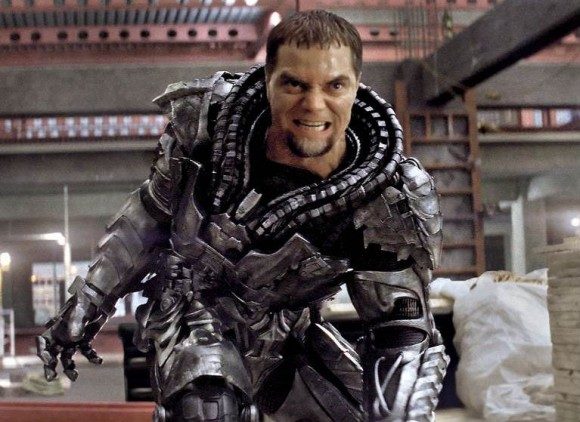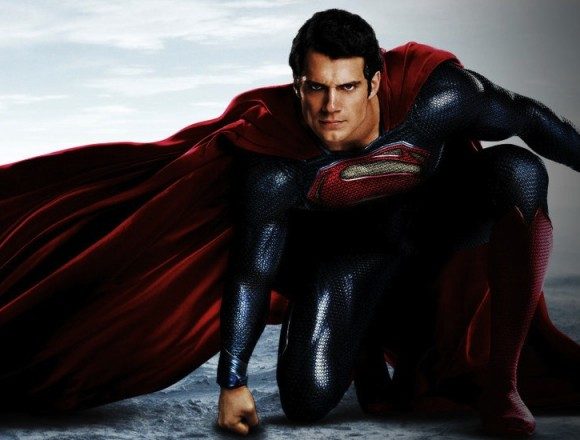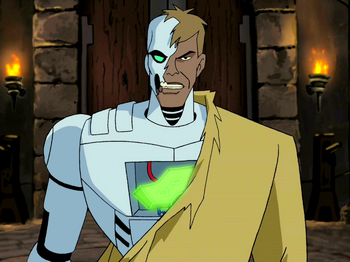Welcome to the inaugural installment of Revisionist history, where we, unencumbered by the demands of studios and profit margins, try to imagine better versions of the movies that are out there. This is not a review; it is a full-spoiler discussion of what works and what doesn’t, particularly from a story standpoint (i.e. unless there’s a particular tic that is distracting, it’s hard to account for a poor acting performance other than to say, “Do better.” Which isn’t very interesting or helpful to anyone.)
This week, we’re revising Man of Steel.
On the whole Man of Steel had more strengths than flaws; it is a perfectly competent, if unexraordinary, telling of the Superman fable. But we don’t want mediocre. We want groundbreaking. So what needs to change?
The biggest issue with Man of Steel is that it seeks in a single movie to tell two stories that are almost wholly independent from one another. There’s the character study of the alienated Clark Kent trying to find his way in the world, and then there’s the whole bit with General Zod trying to find Kal-El and terra-form Earth into a new Krypton. The movie tries to connect the two with Clark accidentally sending out the distress beacon, and then making him choose between Humans and Kryptonians, but it’s functionally a very weak connection. There’s a lot of plot contrivance that goes into it that doesn’t feel very natural. Let’s look at each part first, and then we can explore how the two might fit together.
The initial impulse with regard to Clark Kent is actually pretty brilliant, even if it’s very straightforward once you think about it. Superman is a character that can get out of hand very quickly because he’s so powerful. But therein lies the intrigue, doesn’t it? There have been iterations of a Superman that’s purely good, and iterations where he’s purely evil, but he’s rarely a character seen in shades of grey. So the natural question becomes, Why is he so good? What might push him over the edge? What is motivating this character to action? Man of Steel has some answers to these questions, but they’re not always satisfactory.
The Wolverine-esque wanderings of Clark Kent were great. Combined with the flashbacks they show us a man who is quite literally directionless. There are so many competing forces weighing on him, Clark doesn’t entirely know how to cope. We’ll come back to those flashbacks in just a moment, but in the middle of this we see two things that are very telling about his character. First, there’s the rescue sequence on the oil rig. We see Clark’s internal compulsion to do something when he can. It’s self-sacrificing, but in a way that boils down to, “Because he’s a good guy” rather than, “Because he’s the good guy.” We believe this is part of Clark’s character because it’s something we would do ourselves, given a comparable scale of danger. Said differently, as we see him here he’s not trying to live an extraordinary life, so we don’t question if he’s out for himself or if he’s truly altruistic. We accept his momentary heroism because it’s something that feels innate to our existence as well.
Second, there’s the diner sequence, when the boisterous trucker pours the pitcher of beer over Clark’s head. Obviously, Clark could fight back. No one would blame him for fighting back. He could restrain himself a little and still trash this guy. But he doesn’t. He walks away, and that’s a huge moment. It’s also pretty important, by the way, when he destroys the guy’s truck. It’s a funny slapstick moment, but it’s also wildly out of traditional Superman character. I actually thought this was a great touch, and it’s something we’ll come back to.
In short, despite some missteps in execution, the idea to tell the Superman origins story is sound. As I’ve written before, we may be tired of the superhero origins story tale, but this is one that really matters. I’ve argued in other venues that The Amazing Spider-Man, for example, should have skipped the Uncle Ben shtick altogether. Not because I don’t like Martin Sheen (he’s amazing), but because that isn’t what’s interesting about the character. We believe Peter Parker is a good guy from the beginning, but Peter’s got motivation to seek revenge, and plenty of Spider-Man stories explore the morality of using his powers for personal gain, not just the Uncle Ben bit. And it could be argued that Man of Steel is shooting for something very similar. But here’s the difference: powerful though Spider-Man is, he can still be conquered by the everyday police. Superman suffers no such limitations. Thus, being a superhero for Superman is much more the destination than it is the journey (as it is for nearly every other hero).
Journeys make good movies, not destinations. Not that we don’t want to see Clark Kent as Superman, but we want to be well-convinced of how he got there before we’re ready to move on. And with that, let’s spend some time on Zod.


At first blush, Zod seems like the perfect villain for this movie. He’s Kryptonian; he represents that potential to Superman in a movie that’s very much about identity and fitting in. And in some prior iterations of the character, that’s exactly what he’s been. But look a little closer, and that’s not who this Zod is.
In Man of Steel, Zod announces himself to Earth (and Superman) with a threat. Rather than welcoming the last son of Krypton with the hand of an ally, Zod brandishes a fist. Not once does he present a compelling case that Superman would be better off on a new Krypton than his is on his familiar Earth. The issue isn’t that Zod rapidly turns to violence, it’s that he’s so one dimensional that he never tests Superman’s resolve.
But really, in a film where Superman is not yet a well-known, otherworldly persona, does the choice between Human and Kryptonian matter? He may be on the fringe of society at times, but we see Clark forge meaningful relationships with a number of different people. He self-identifies as Human. It’s only after the weight of the world on a public Superman persona comes crashing down on him that the choice between Earth and Krypton be one that’s worth weighing. Zod would have made sense in the already announced sequel, but he creates a gulf between two halves of Man of Steel. What’s needed is a villain that challenges Superman to succeed by proving his humanity, not his altruism.
So, with all that in mind, a revised synopsis might look something like this:
We open much the same, minus that whole Krypton blowing up thing (just like Uncle Ben in The Amazing Spider-Man, it’s more distracting than it is additive). Baby Kal-El is found clutching the key with his family emblem on it, so we preserve that. A grown Clark Kent wanders about, maybe not quite existentially – he does have a home and loving parents – but trying to find his place in the world nonetheless. We see flashbacks of him as a little kid dealing with the emergence of his powers and the challenges of remaining anonymous. He builds friendships, but struggles to feel secure. Pa Kent doesn’t die in a tornado, because Superman isn’t Batman. Batman is motivated by vengeance and duty. Superman must become altruistic, deciding once and for all that people are worth defending, and that to use his powers otherwise just makes him a bully (this is why that scene where he trashes the guy’s truck, and probably a couple other scenes like it, are so important). Every time he reveals himself by helping someone he has to start over, but that’s part of how we know he’s a good person: he’s repeatedly self-sacrificial despite his justifiable inclinations otherwise. It becomes part of his character rather than part of his caricature.
Meanwhile, we see Lois Lane reporting on a military expedition in the arctic, much like before. She’s regaled with reports of strange instrument readings and a number of miraculous near-miss accidents. Maybe she even still notices Clark sneaking off at night and follows, because the fact that Lois Lane knows who Superman is from the get-go is an interesting twist and I’m interested to see where it goes. When she gets there, however, she finds a Clark whose been investigating this ship for some time now. We don’t need to see it, but he’s probably plugged in his key and chatted with either Jor-El or the ships computer about the history of Krypton, so we can assume he’s now reasonably well informed about his past. Lois goes to run out and tell someone, but Clark stops her, revealing his super-speed. Also, he’s in the Superman outfit and looking very alien. We get a tense but comic exchange that results in Lois agreeing to keep everything secret if she gets exclusive interviews and an abashed Clark admitting he was playing dress-up in an ancient Kryptonian suit he found. So we get humorous explanation that is still reverent to the Superman suit without completely sidestepping the question (pretty peeved that Man of Steel never addressed this in the slightest).
Lois’s exclusive is ruined when the military announces the find of the alien space ship a few days later. They accidently activate something and the ship’s logs go crazy. Clark manages to get nearly everyone out moments before the ship blows up, but one soldier is severely injured and loses all his limbs. Lois’s editor won’t run her story because he believes she was tricked by a hologram. The military scientists find some sort of new material from the ship explosion. It glows green and gives off a tremendous amount of energy in testing.
Clark returns home and talks to his parents about alien power and the danger it poses to people. We take it he feels personally responsible for the man who was hurt. Meanwhile, the solder, whose name is John Corben, volunteers to test new prostheses powered by the new material (kryptonite, of course, though no one knows to call it that) from the ship. They encompass most of his body, and are more successful than the doctors could’ve imagined. They plan to break the kryptonite and use pieces to power lots of prostheses at a normal human level, but John objects and breaks out, using his superhumanly energetic prosthetic limbs. Metallo is born.
Metallo is now on the run, and giving the National Guard all they can handle, so Clark/Superman goes to help them, wearing the Superman suit because normal clothes can’t stand up to his abilities. Cornered, Metallo holds people hostage. Superman arrives and goes in, trusting his super abilities to help him end the standoff. Of course, as soon as he gets anywhere near, the kryptonite starts to take effect. Superman, no longer the immortal figure, still puts himself in harm’s way protecting to hostages from Metallo as he helps the National Guard bring Metallo in. He is human, and still a hero. He’s found his place. He tells the National Guard to keep the kryptonite as a final proof that he is humanity’s protector, not its aggressor. Superman has arrived, and just like the final scene from Man of Steel, he goes to take a job at The Daily Planet to keep his ear to the ground.
There are a few things details to still sort out, of course, but were’ left with a more thematically and narratively whole film, and we have the cosmic threat of Zod waiting in the wings for the sequel (and a weapon to fight him with, which will help when we eventually have to have a plausible counter for these forces in the Justice League movie). Though we’ll probably still forget the terra-forming…
Got your own ideas for how Man of Steel should have been different and why? Leave your version in the comments!



